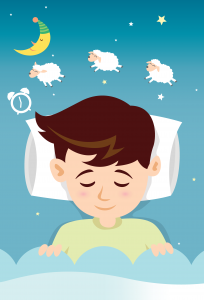If sedation has been recommended or given as an option for your child’s dental treatment, this information may be helpful in answering many of your questions.

- What is conscious sedation?
Conscious sedation is a minimally depressed state of consciousness intended to relax the patient in order to help assure the safe and comfortable delivery of quality dental treatment. - Why is conscious sedation used?
There are many reasons that your child may need conscious sedation. Some of the more common reasons are:
- Young age
- Anxiety regarding dental procedures
- Inability to sit still through a long treatment appointment
- Large amount of treatment needed
- Technically difficult dental procedures requiring enhanced cooperation
- What types of conscious sedation are available?
We offer three types of conscious sedation in our office:
- Nitrous oxide and oxygen (inhalational)
- Oral (by mouth)
- Intramuscular (IM)
NITROUS OXIDE AND OXYGEN
This is a very safe gas mixture inhaled through a pleasant smelling nasal hood. This mixture helps many children feel more relaxed and less anxious. It usually produces a pleasant sensation and mild analgesia for some children. Local anesthesia is still required for the majority of procedures. Once the procedure is finished, the patient breathes pure oxygen for 3-5 minutes and is ready to go home with no side effects. This is most appropriate for slightly older children (>4 years old), mildly anxious children and those who may need just a little extra help in completing a minor procedure.

ORAL SEDATION
One or more sedative medications are administered to the patient in attempt to achieve an increased level of sedation over nitrous oxide and oxygen alone. The specific medication(s) is chosen based on the particular needs of your child and the treatment goals of the doctor. The oral medication is supplemented with nitrous oxide and oxygen. Special monitoring and training are required for the administration of this type of sedation. Your child can usually leave the office within 10-30 minutes after completion of the treatment. This type of sedation is most appropriate for children 3 years of age or older, those requiring minor amounts of dental treatment but more sedation than nitrous oxide and oxygen alone.
INTRAMUSCULAR (IM) SEDATION
One or more medications are given through an injection (normally in the leg) in order to achieve a deeper level of sedation over nitrous oxide and oxygen alone. The specific medications are based on the particular needs of your child and the treatment goals of the doctor. Nitrous oxide and oxygen are used to supplement the sedation. This method of sedation generally produces more reliable results than the oral method and requires additional training and a special license for administration. The monitoring requirements and recovery time are similar to those of oral sedation. This type of treatment is appropriate for those over 2 years of age with mild to moderate dental needs, those who desire a more predictable sedation and those who do not take oral medications with ease.
- What are the side effects of conscious sedation?
All forms of sedation may cause nausea or vomiting on rare occasion. Oral or IM sedation may also cause respiratory depression, drowsiness and prolonged recovery. All of these side effects occur infrequently and are easily managed by those properly trained in the use of these forms of sedation. - What are the necessary preoperative instructions?
For oral and IM sedation appointments, your child cannot eat anything for eight hours prior to their appointment time. Your child may have clear liquids (water, apple juice, plain Jell-O, etc.) for up to two hours prior to the appointment. Your child MAY NOT have anything (not even water) for the two hours prior to the appointment.
You should bring an extra change of clothes and a blanket with you on the appointment day.
- What should I expect after the appointment?
For oral or IM sedations, your child will need to have a quiet, supervised day at home for several hours after the procedure. You will be given a postoperative instructions sheet after the appointment, prior to leaving our office. - Who is not a candidate for conscious sedation?
If your child is under 2 years of age, requires extensive treatment, is very anxious or is very uncooperative, he/she is not a candidate for conscious sedation. In these cases, intravenous (IV) general anesthesia may be recommended. This service is also provided in our office.
